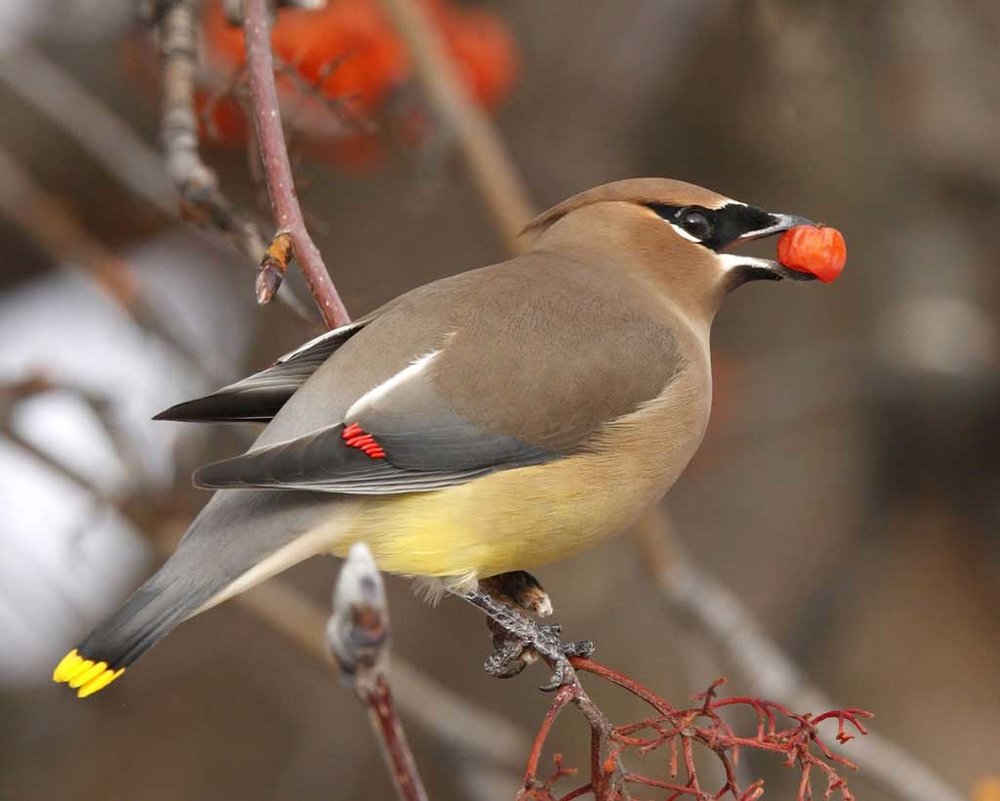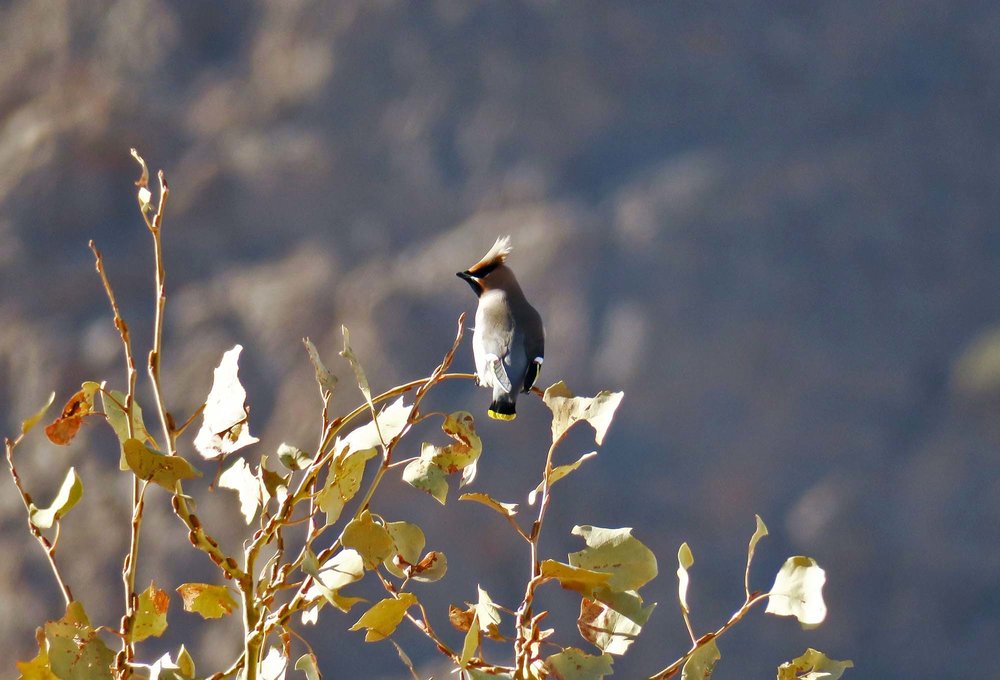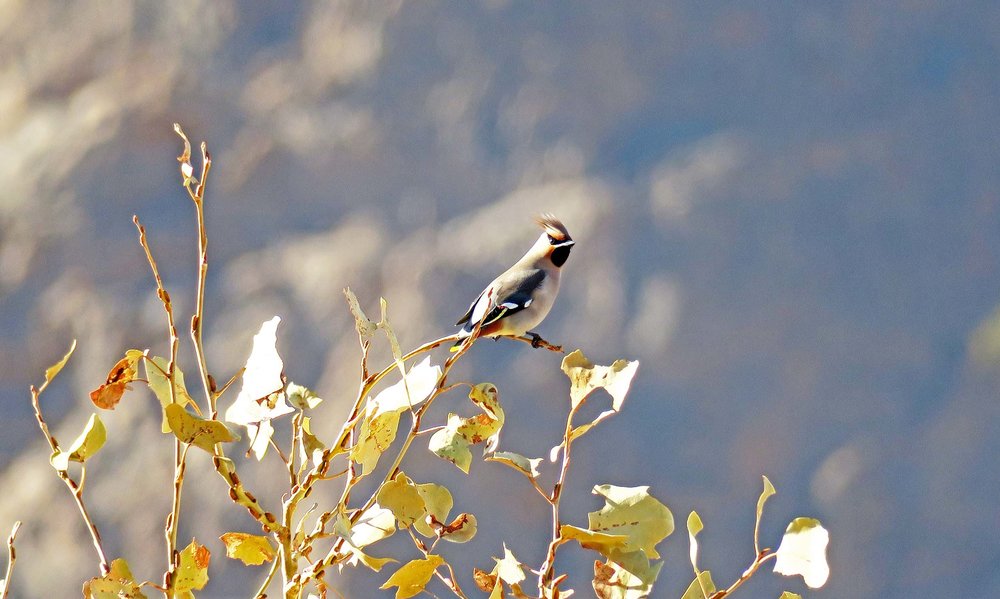Waxwing poaching in Iran on the rise

Wildlife Rehabilitation Center of Pardisan Park have been facing an immense number of wildlife illegal trades; unfortunately poaching and illegal trade is all-encompassing. Many species are added to the list of poaching currently, but waxwing poaching is unprecedented and the species is doomed to extinction.
Characteristics
Waxwing (Bombycilla garrulous) often breeds in remote, lichen-rich, mature forest in damp, mossy terrain. They nest high up on branch, often in pine trees. In winter it can eat frostbitten and semi-fermented berries, which may intoxicate the bird and render it temporarily incapable of flight. Waxwings have apparently developed a highly efficient liver (better than humans) to cope with this, since it usually recovers quickly. They eat insects in summer, and in winter as mentioned before use berries, preferably rowan berries, or some insects which they often catch in flight.
Waxwings get their name from the long glossy red tips to the feather shafts in the middle of their wings. They have large crest on crown combined with reddish-buff color eliminates all other species. It has narrow black eye-mask and black bib, yellow tail-tip plus yellow and white pattern on wing combine to make it unmistakable. In their first winter the male only have pale yellow straight lines but adult males have a broad yellow ribbon at the end of their tails. Adult males have sharp black edge bellow their necks but adult females have diffuse edge.
Pleasant song
The contact call of waxwings is silvery, high, metallic trill on even pitch, trrreee or siirrr. It is similar to a small bell, often in pealing chorus from flock before rising and in flight sounds like a surging ring. Waxwings sometimes song slow and halting, a series of call notes mixed with hard, raucous sounds.
Waxwings are migratory birds in Iran and observed in small numbers especially in north east and south.

The numbers that reach us depend on fruit and especially berry trees. Last year a waxwing observed in Abbasabad Chupanan wildlife refuge, Isfahan province, which was a new record for this region . Some hypotheses suggest that lack of food, because in years when berries are low in abundance, birds have to move away to find food elsewhere.

Berries are incredibly important for waxwings in winter and they typically eat 800-1000 berries a day, roughly twice their body weight!
Conservation status
International Union for Conservation of Nature and Natural Resources (IUCN) pinpointed to extremely large range of waxwings (Bombycilla garrulous) and classified them as Least Concern (LC) because they do not meet the thresholds for vulnerable under the range size criterion (extent of occurrence <20,000 km2 combined with a declining or fluctuating range size, habitat extent/quality, or population size and a small number of locations or severe fragmentation).
Waxwings are native to Iran and there is no sufficient data or evaluation to confirm the number of population or even population trend. Food supply and other factors explain that it appears in greatly fluctuating numbers from year to year.
Illegal trade and poaching

Wildlife trade is a business which has led to omission of some important species from their natural habitat. Raising public awareness can successfully leverage more support for wildlife protection in a particular context. Many waxwings have been transferred recently to Wildlife Rehabilitation Center of Pardisan Park. Unfortunately, many people love waxwings because of their beauty and they don't know that waxwings are native wild species in Iran hence they cannot be kept as pets. Bird shops are as well a threat to wild species. All buyers should also make sure that the birds they want to buy are not wild species.
A bit of a stretch
Buying wildlife species is a big challenge to the wildlife. Many of these species die and this threat appears to be particularly prevalent in our country. Wildlife conservation ambitiously striving to limit illegal trade which is driven by the concern over long-term wildlife exploitation. There are many solid evidences that confirm some of Iran’s native species are still being threatened by legal and illegal exploitation. The biggest turning point is raising consciousness and changing the current trend, there would be no market if we do not buy. We should be conscious and do not fell under the spell of unknown vendors. As World Wide Fund for Nature said, it is almost impossible to obtain reliable figures for the value of illegal wildlife trade but it is considered as the largest direct threat to the future of many of the world’s most threatened species. It is second only to habitat destruction in overall threats against species survival.
